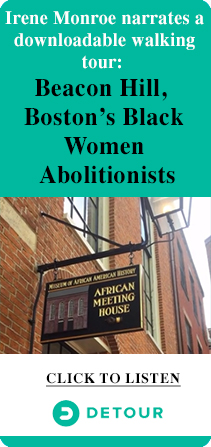One of the ways that this society has been able to control and regulate human sexuality has been through the institution of marriage. Set up for the sole purpose of procreation and maintaining conventional gender roles, marriage institutionalized heterosexuality. Marriage also became the ceremonial way to make men and women behave in the way the state and church mandate that we do, without the obvious and ominous signs of social control.
Queer unions are not only perceived by the state and church as outside of the perimeter of marriage, they are also outside of the boundaries of what many people can perceive as a legitimate form of human intimacy between two people. A clear and obvious sign of that, for me, is the television commercials I do not see showing lesbian, gay, bisexual and transgender people holding hands, receiving red roses, or chocolate hearts, or sing-a-grams, or Hallmark cards this month of Valentine’s Day. The absence of these images makes it that much harder for a society to understand that we, too, deserve the right to love one another and to marry.
Since the beheading of St. Valentine in Rome in the year 270 C.E., marriage has been controlled by church heads and heads of state and not by the hearts of lovers. When Emperor Claudius II issued an edict abolishing marriage because married men hated to leave their families for battle, Valentine, known then as the “friend to lovers,” secretly joined them in holy matrimony. While awaiting his execution, Valentine fell in love with the jailer’s daughter, and in his farewell message to his lover, he penned “From your Valentine!”
The controlling of black bodies and black sexualities became a way of life in the American South with the institution of slavery. African-American slaves were forbidden to marry until the end of the Civil War in 1865. Prior to the end of the Civil War, my ancestors had to “jump over the broom” — an African-American tradition — to legalize their nuptials before a cloud of witnesses. My ancestors jumped over the broom because they knew that although their unions were not sanctioned by either the church or the state, they were unequivocally sanctioned by God. Slavery failed to recognize the marriage or family rights of slaves.
As history has shown, interracial unions posed a different threat to the regulation of human sexuality and the institution of marriage. People not only fell in love with those inside their race, but when given the freedom to choose they also fell in love with people outside of their race. In the now-famous case “Loving v. Virginia,” Mildred Loving, an African-American woman violated the antimiscegnation laws of Virginia, a law that was prevalent throughout the U.S., by marrying a white man. Struck down by the U.S. Supreme Court as unconstitutional in 1967, no state today in this country can prohibit such a union.
The last form of discrimination within the institution of marriage is same-sex unions. Whereas many people once perceived interracial marriages as unconscionable, many now perceive same-sex marriages as both unconscionable and ungodly. Unfortunately, too many Christians and heterosexuals miss the point that marriage is a basic human right, and to deny us that right is ungodly, because as Jesus said in Matthew19:6, “What God has joined together, let no one put asunder.”
Before marriage became a heterosexual enterprise, same-sex unions were allowed in the church. Intolerance of lesbian, gay, bisexual and transgender people was not a dominant feature in Christianity until the 12th century. This is the same time when the Roman Catholic Church formalized its position on celibacy in the priesthood.
However, for some lesbian, gay, bisexual and transgender people, the present model for marriage is inadequate for them, because it’s fitted for heterosexuals. Michael Ansa-Asamoah — Director of Community Life at Middlesex School, a prep school in Concord, Mass., and a gay man from Ghana — said to me: “Marriage is the only model that gay people have had for sanctioned intimate relationships, but it really fails to provide us with an authentic sense of our own particular social and spiritual experiences and needs as gay people. We need to come up with or reinvent our own model of committed and socially sanctioned relationships.”
Human intimacy is what threatens the inhuman mandates placed upon us by the church and state. Human behavior has shown us that the heart will go where the head is trained not to. Also, whereas marriage need not always be about love, human intimacy is, and it threatens the conventional images and expectations placed upon us that are constantly reinforced and plastered on billboards, on television screens, and on Hallmark cards.
These images are benign guises for regulating and controlling human sexuality. Once society begins to showcase the various forms of human intimacy, people can then perceive same-sex union as neither unconscionable nor ungodly.
I look forward to the day when I can purchase a Hallmark for my lover and inside it will say, “From your Valentine!”



